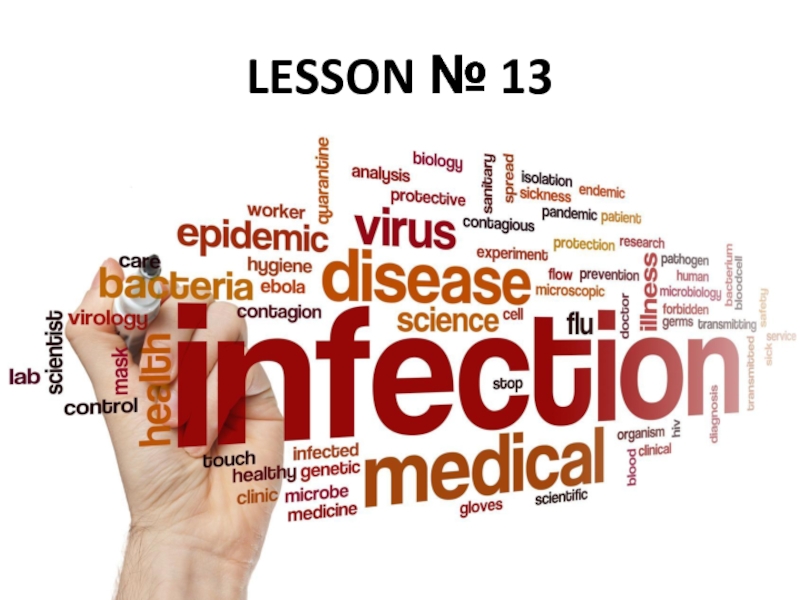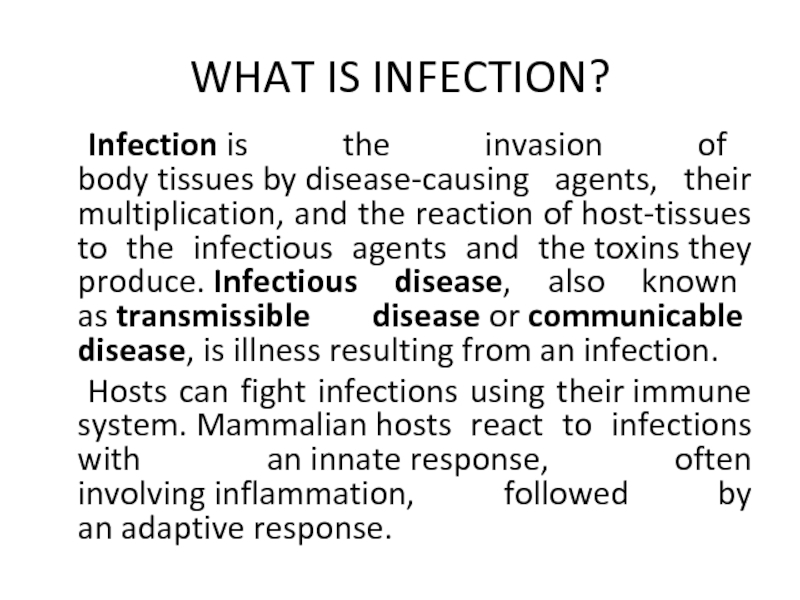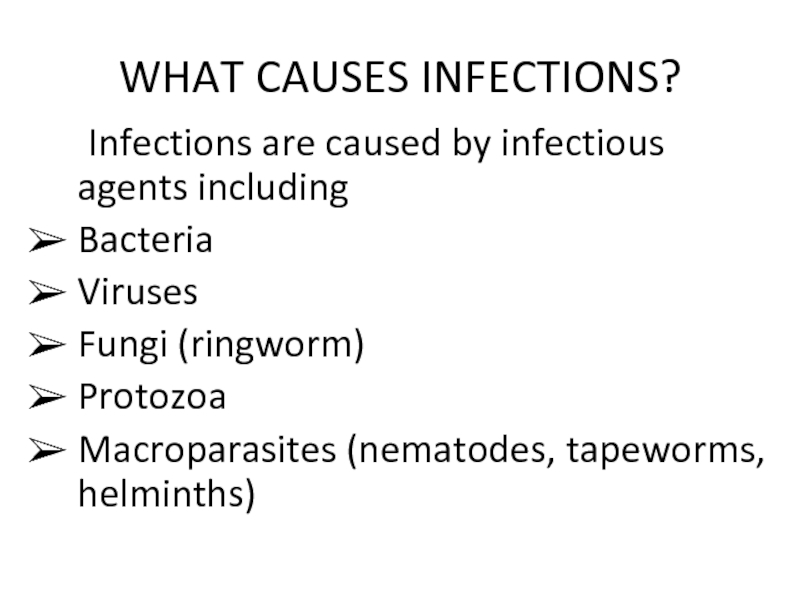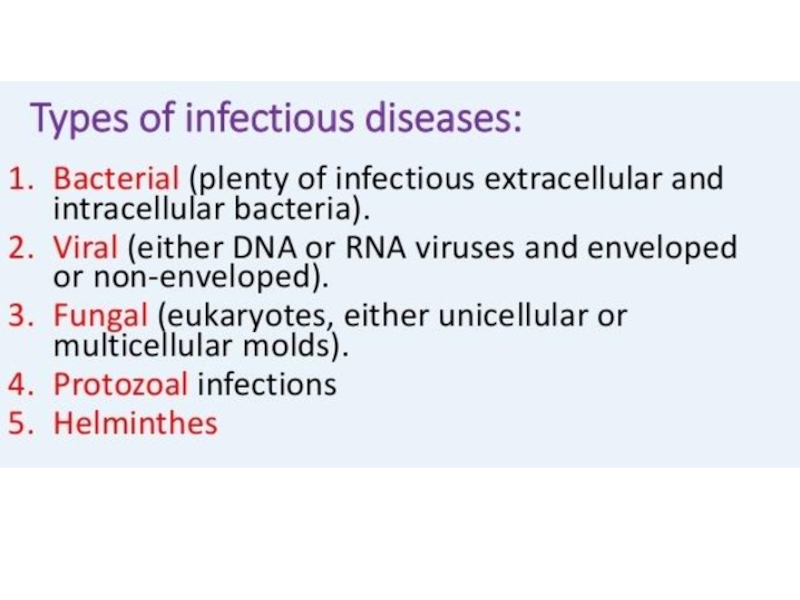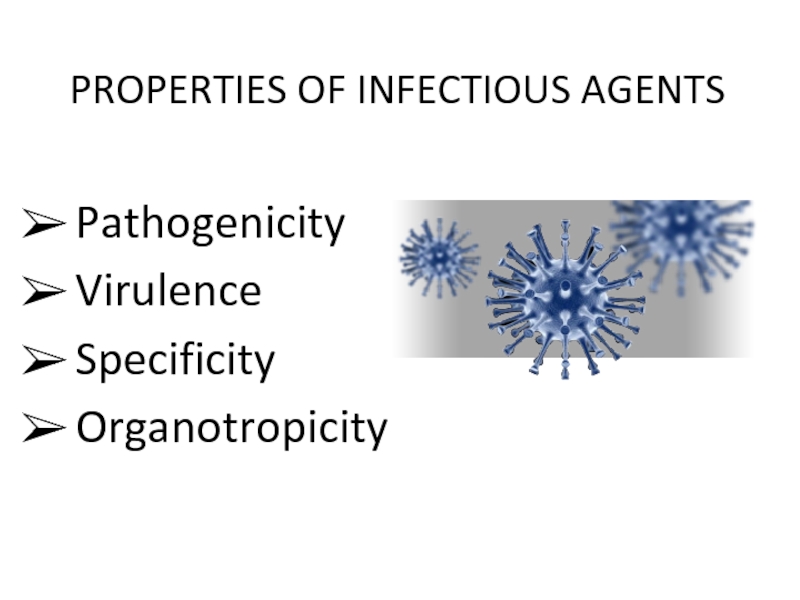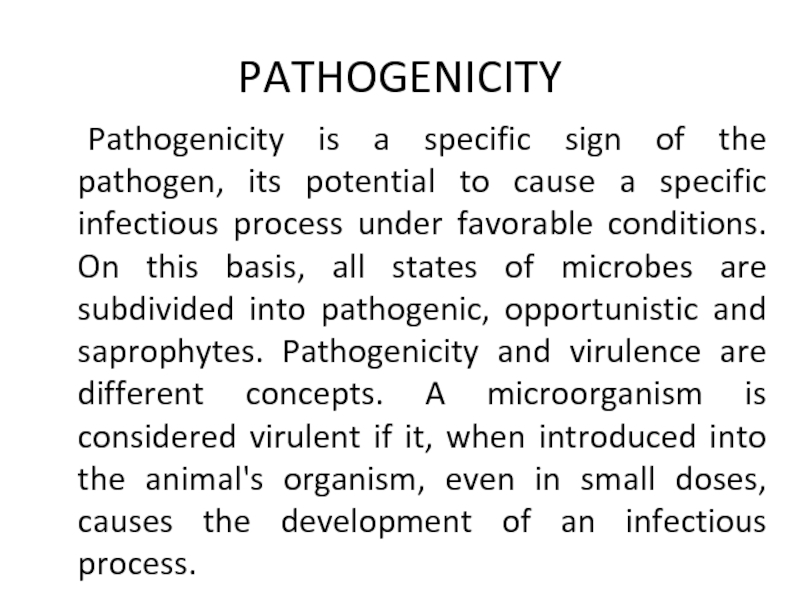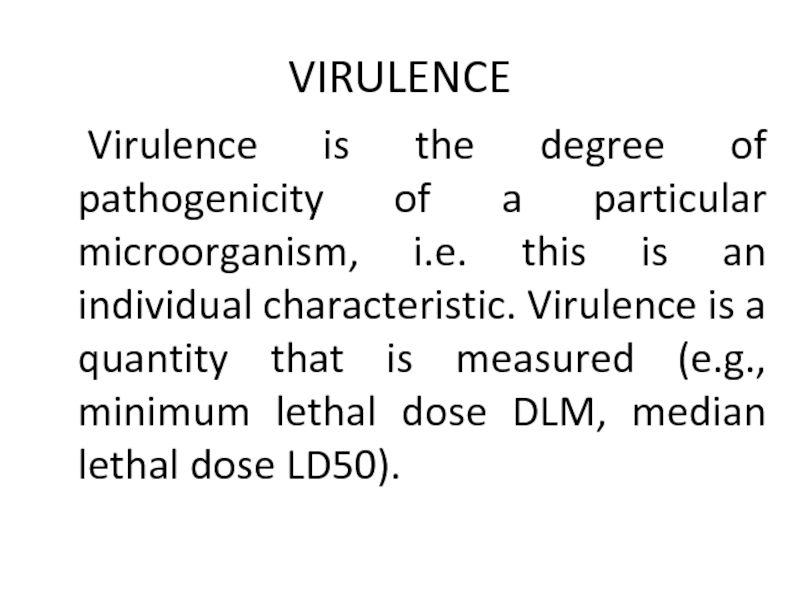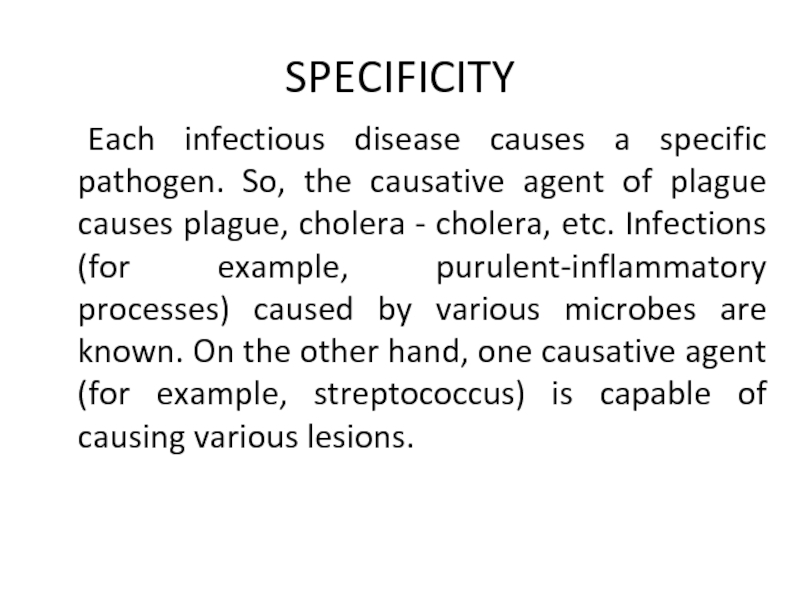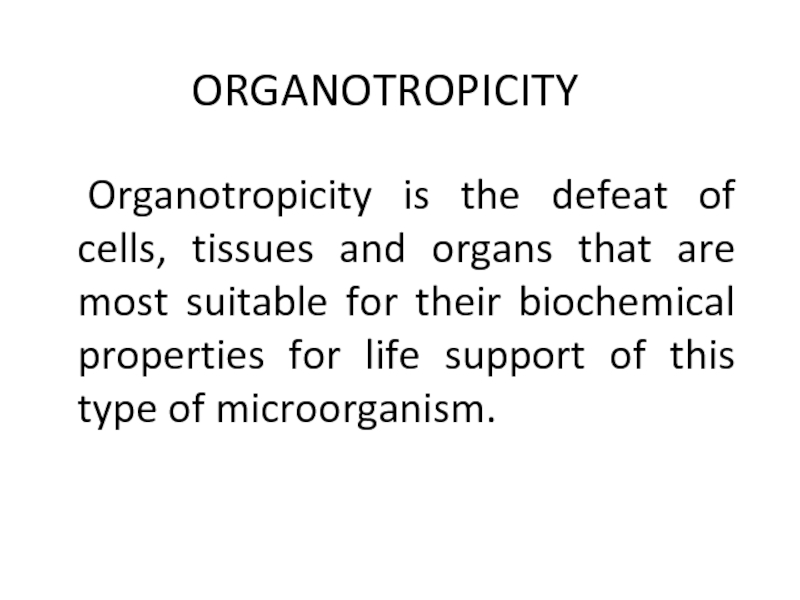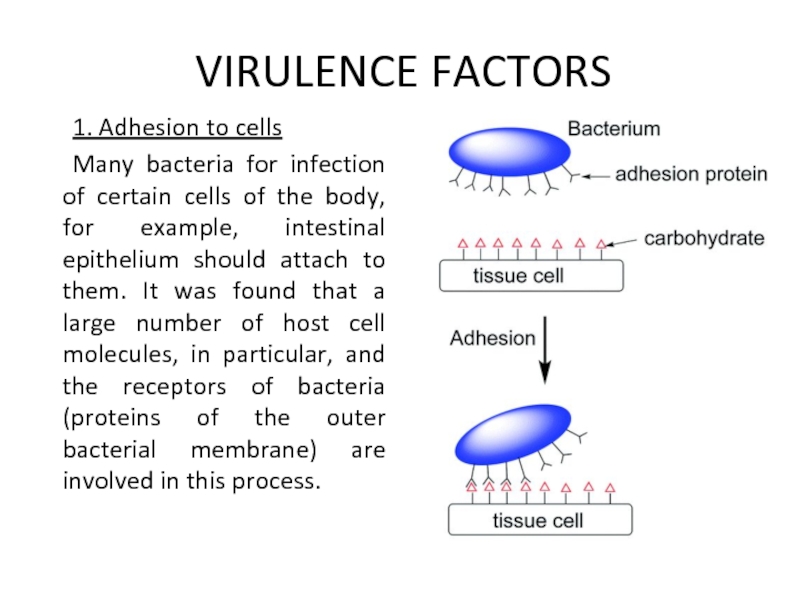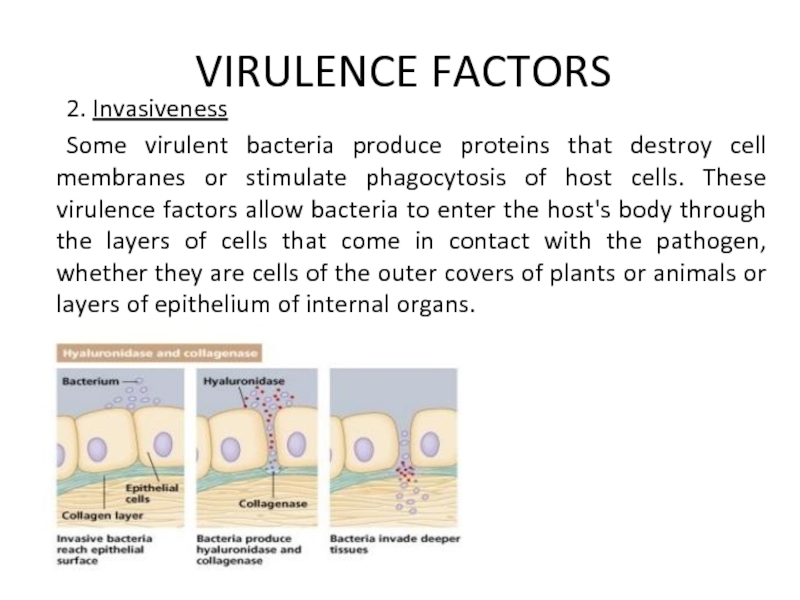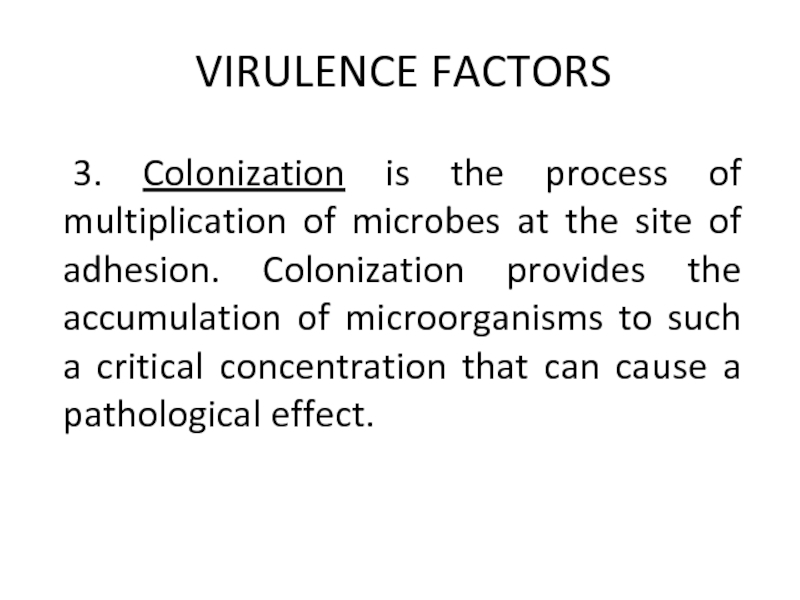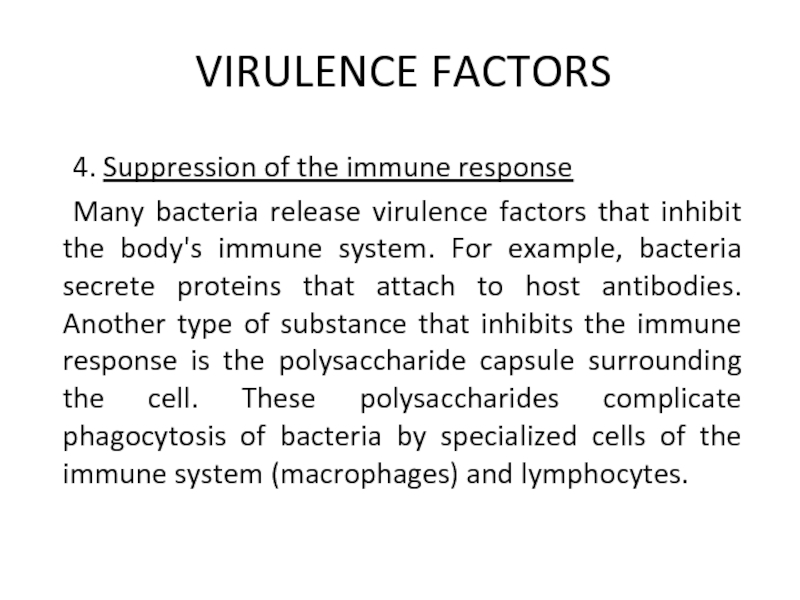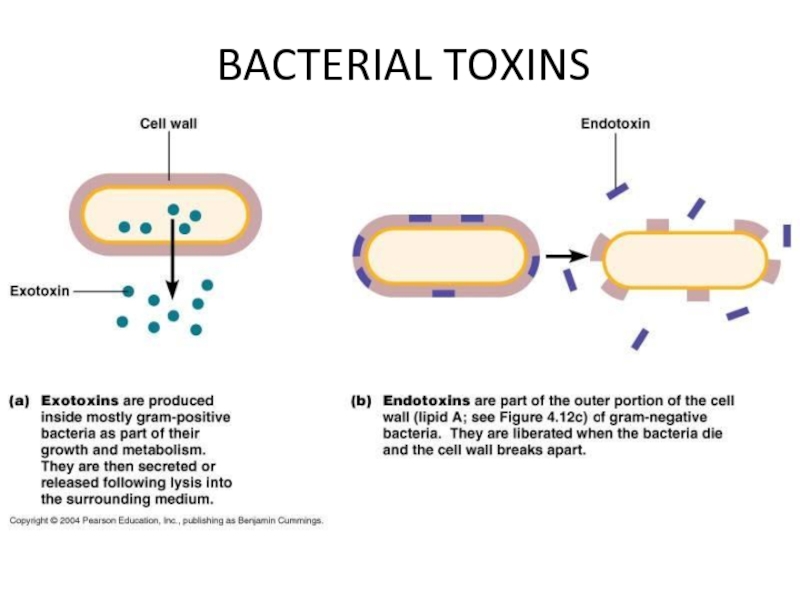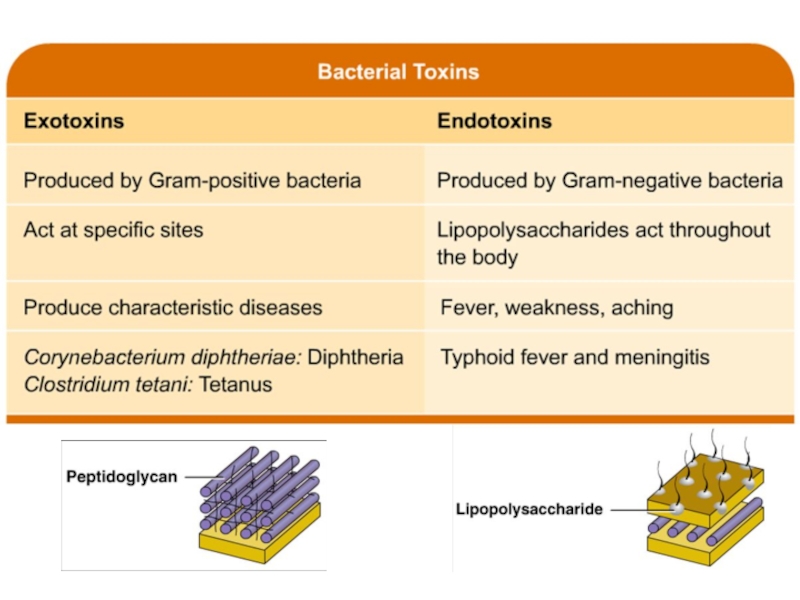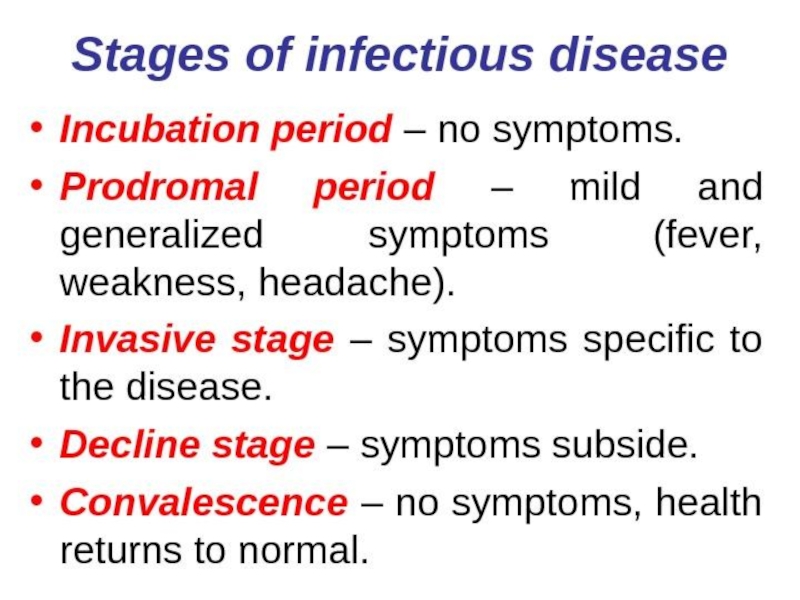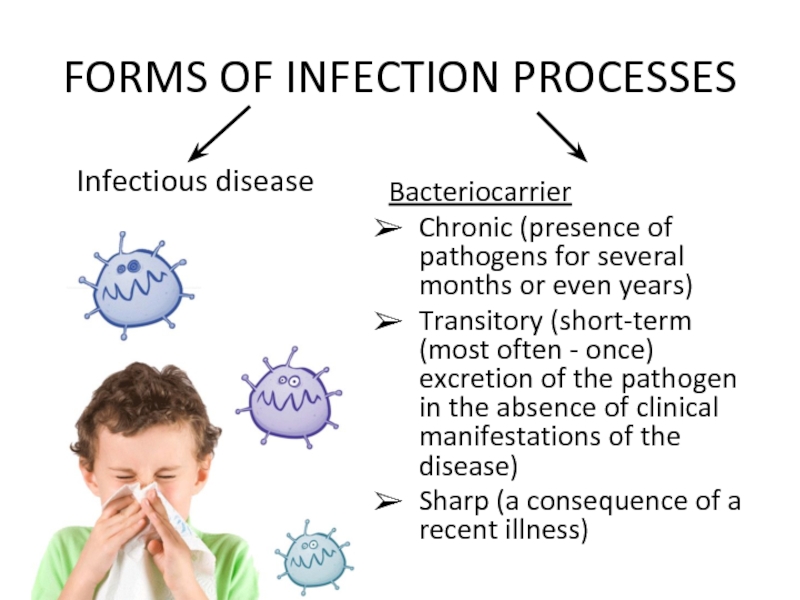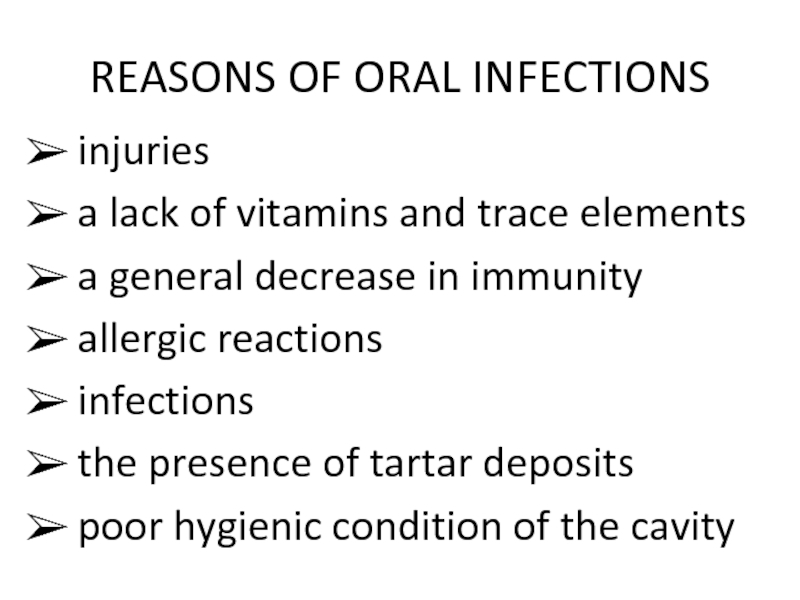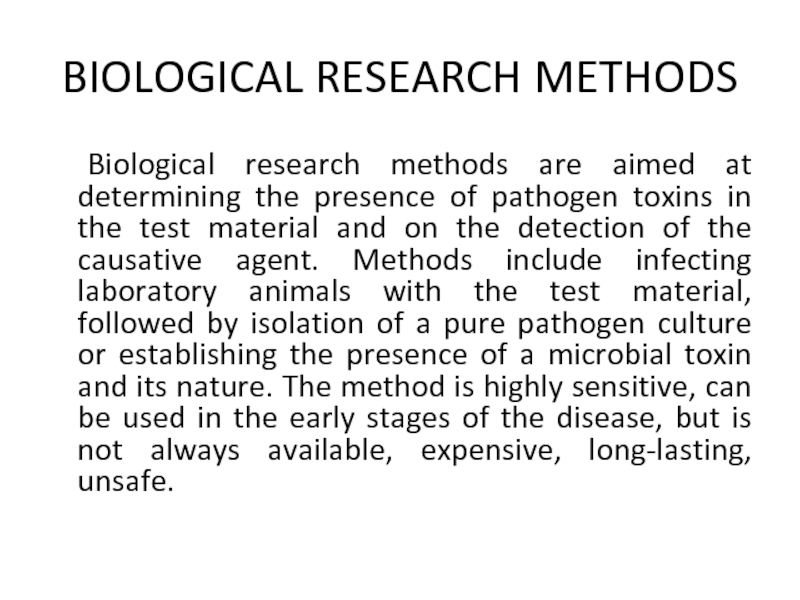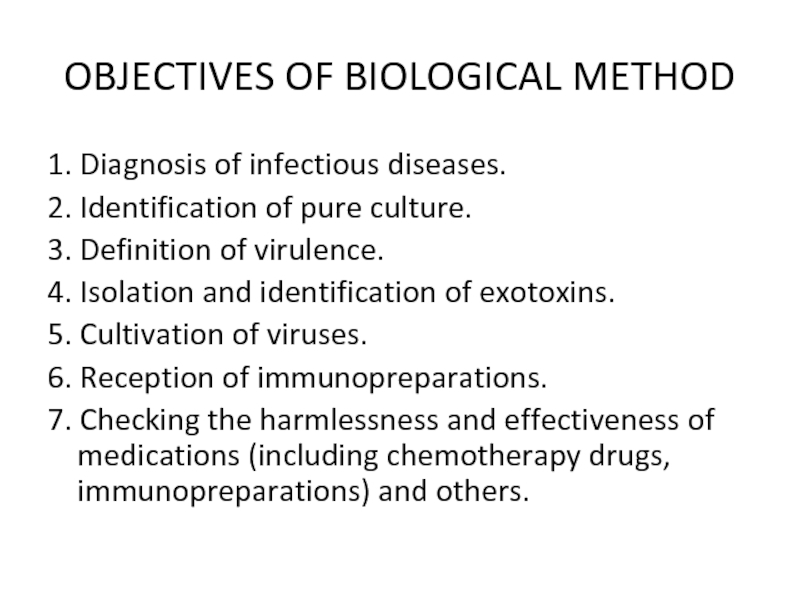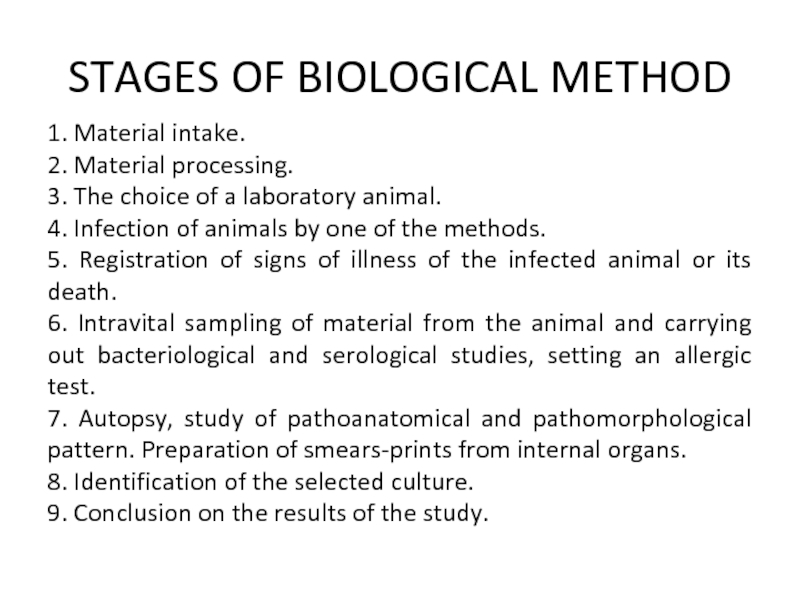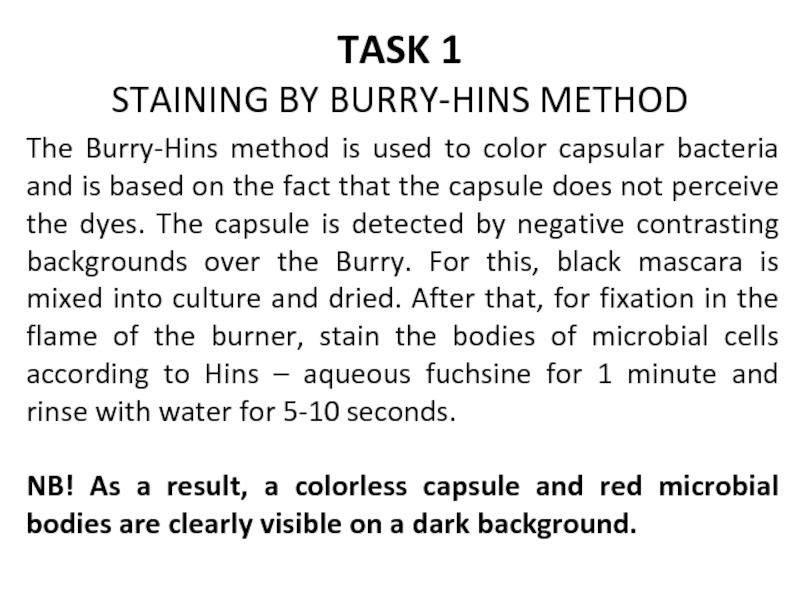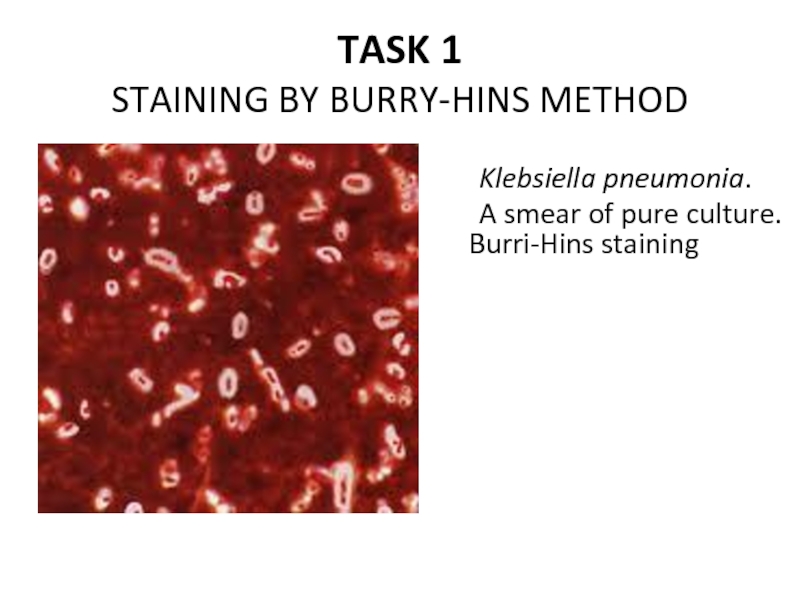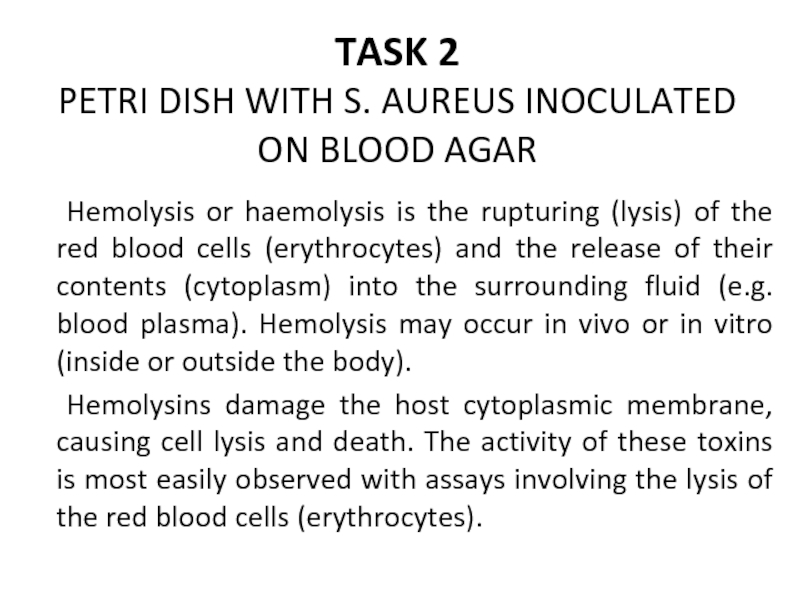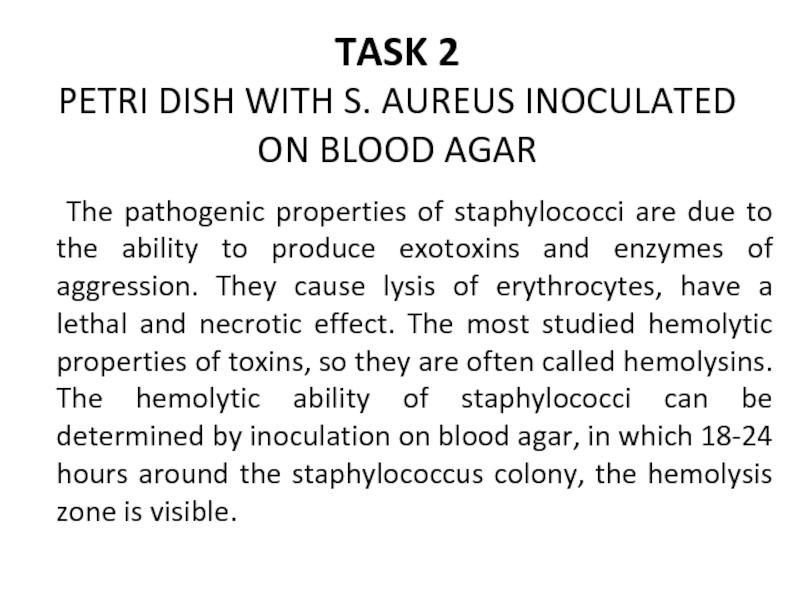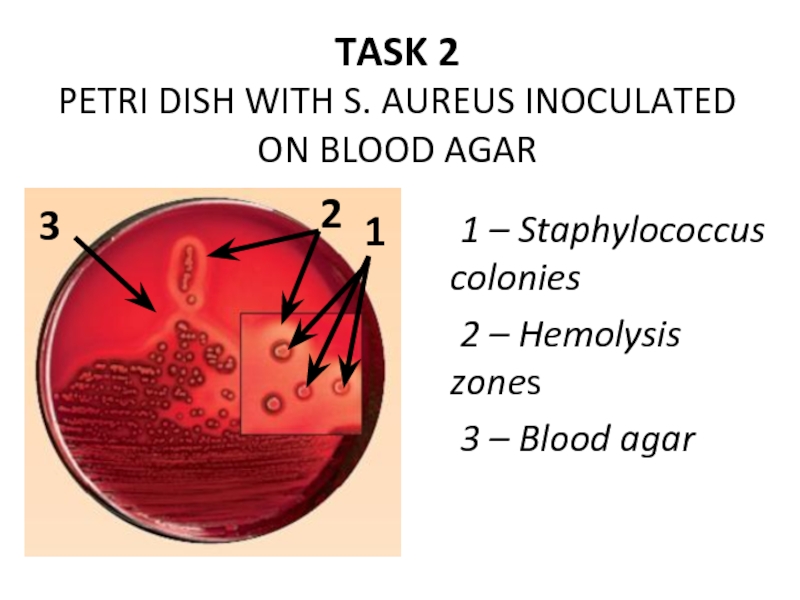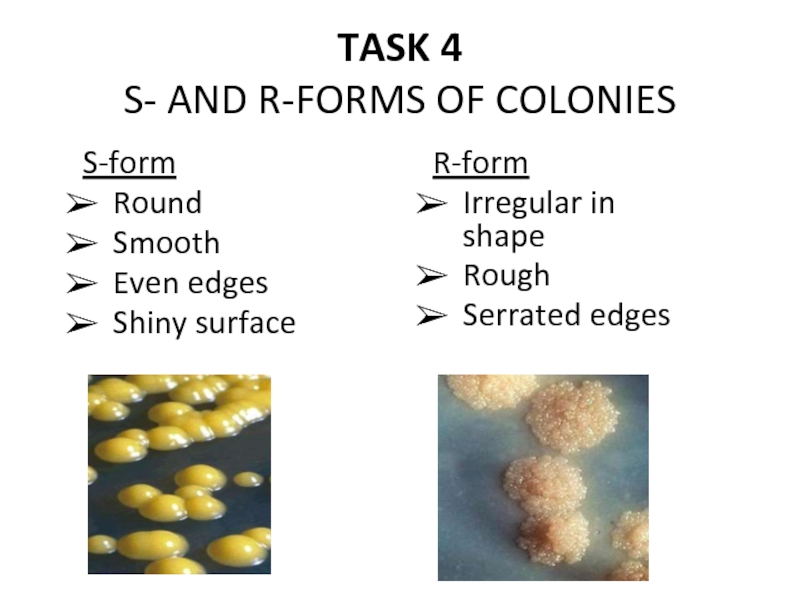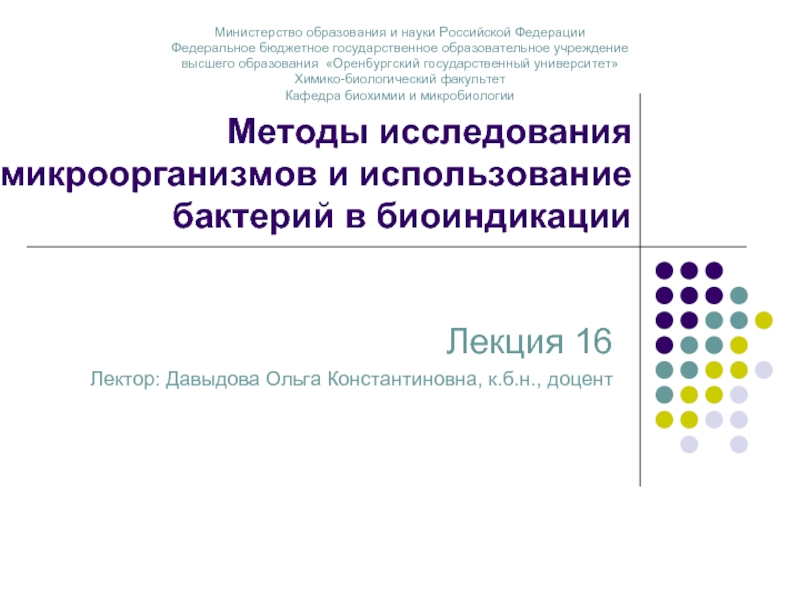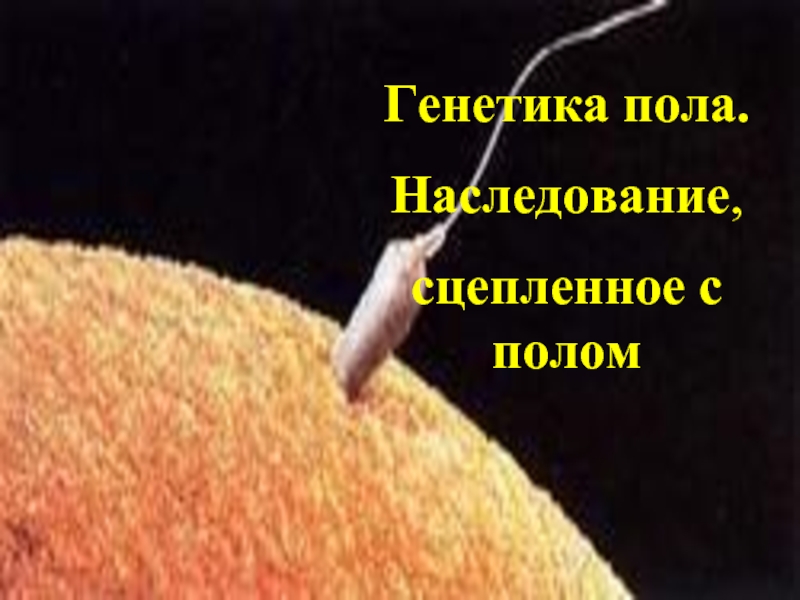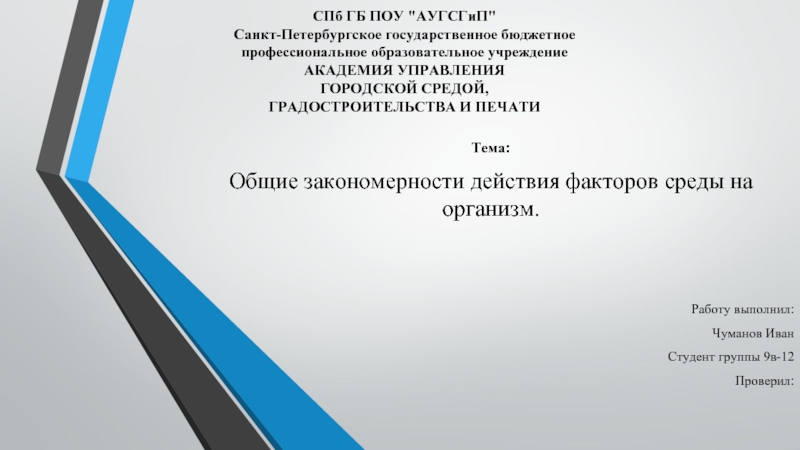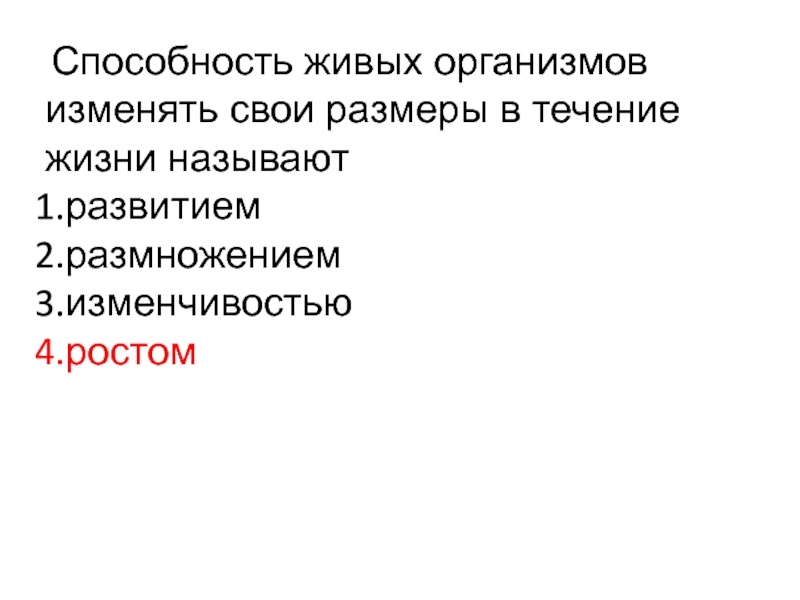- Главная
- Разное
- Дизайн
- Бизнес и предпринимательство
- Аналитика
- Образование
- Развлечения
- Красота и здоровье
- Финансы
- Государство
- Путешествия
- Спорт
- Недвижимость
- Армия
- Графика
- Культурология
- Еда и кулинария
- Лингвистика
- Английский язык
- Астрономия
- Алгебра
- Биология
- География
- Детские презентации
- Информатика
- История
- Литература
- Маркетинг
- Математика
- Медицина
- Менеджмент
- Музыка
- МХК
- Немецкий язык
- ОБЖ
- Обществознание
- Окружающий мир
- Педагогика
- Русский язык
- Технология
- Физика
- Философия
- Химия
- Шаблоны, картинки для презентаций
- Экология
- Экономика
- Юриспруденция
What is infection презентация
Содержание
- 1. What is infection
- 2. WHAT IS INFECTION? Infection is the invasion of
- 3. WHAT CAUSES INFECTIONS? Infections are caused by infectious agents including Bacteria Viruses Fungi (ringworm) Protozoa Macroparasites (nematodes, tapeworms, helminths)
- 5. PROPERTIES OF INFECTIOUS AGENTS Pathogenicity Virulence Specificity Organotropicity
- 6. PATHOGENICITY Pathogenicity is a specific sign of
- 7. VIRULENCE Virulence is the degree of pathogenicity
- 8. SPECIFICITY Each infectious disease causes a specific
- 9. ORGANOTROPICITY Organotropicity is the defeat of cells,
- 10. VIRULENCE FACTORS 1. Adhesion to cells Many
- 11. VIRULENCE FACTORS 2. Invasiveness Some virulent bacteria
- 12. VIRULENCE FACTORS 3. Colonization is the process
- 13. VIRULENCE FACTORS 4. Suppression of the immune
- 14. VIRULENCE FACTORS 5. Toxins Many virulence factors
- 15. BACTERIAL TOXINS
- 18. FORMS OF INFECTION PROCESSES Infectious disease
- 19. COMMON ORAL INFECTIONS Oral Herpes Gingivitis Periodontal Disease Dental Caries Canker Sores
- 20. REASONS OF ORAL INFECTIONS injuries a lack
- 21. BIOLOGICAL RESEARCH METHODS Biological research methods are
- 22. OBJECTIVES OF BIOLOGICAL METHOD 1. Diagnosis of
- 23. STAGES OF BIOLOGICAL METHOD 1. Material intake.
- 24. TASK 1 STAINING BY BURRY-HINS METHOD The
- 25. TASK 1 STAINING BY BURRY-HINS METHOD Klebsiella
- 26. TASK 2 PETRI DISH WITH S. AUREUS
- 27. TASK 2 PETRI DISH WITH S. AUREUS
- 28. TASK 2 PETRI DISH WITH S. AUREUS
- 29. TASK 3 TEST TUBES WITH NORMAL RABIT
- 30. TASK 3 TEST TUBES WITH NORMAL RABIT
- 31. TASK 4 S- AND R-FORMS OF COLONIES
Слайд 2WHAT IS INFECTION?
Infection is the invasion of body tissues by disease-causing agents, their multiplication, and
Hosts can fight infections using their immune system. Mammalian hosts react to infections with an innate response, often involving inflammation, followed by an adaptive response.
Слайд 3WHAT CAUSES INFECTIONS?
Infections are caused by infectious agents including
Bacteria
Viruses
Fungi (ringworm)
Protozoa
Macroparasites (nematodes, tapeworms, helminths)
Слайд 6PATHOGENICITY
Pathogenicity is a specific sign of the pathogen, its potential to
Слайд 7VIRULENCE
Virulence is the degree of pathogenicity of a particular microorganism, i.e.
Слайд 8SPECIFICITY
Each infectious disease causes a specific pathogen. So, the causative agent
Слайд 9ORGANOTROPICITY
Organotropicity is the defeat of cells, tissues and organs that are
Слайд 10VIRULENCE FACTORS
1. Adhesion to cells
Many bacteria for infection of certain cells
Слайд 11VIRULENCE FACTORS
2. Invasiveness
Some virulent bacteria produce proteins that destroy cell membranes
Слайд 12VIRULENCE FACTORS
3. Colonization is the process of multiplication of microbes at
Слайд 13VIRULENCE FACTORS
4. Suppression of the immune response
Many bacteria release virulence factors
Слайд 14VIRULENCE FACTORS
5. Toxins
Many virulence factors are proteins that the pathogen produces
Слайд 18FORMS OF INFECTION PROCESSES
Infectious disease
Bacteriocarrier
Chronic (presence of pathogens for several
Transitory (short-term (most often - once) excretion of the pathogen in the absence of clinical manifestations of the disease)
Sharp (a consequence of a recent illness)
Слайд 20REASONS OF ORAL INFECTIONS
injuries
a lack of vitamins and trace elements
a general
allergic reactions
infections
the presence of tartar deposits
poor hygienic condition of the cavity
Слайд 21BIOLOGICAL RESEARCH METHODS
Biological research methods are aimed at determining the presence
Слайд 22OBJECTIVES OF BIOLOGICAL METHOD
1. Diagnosis of infectious diseases.
2. Identification of pure
3. Definition of virulence.
4. Isolation and identification of exotoxins.
5. Cultivation of viruses.
6. Reception of immunopreparations.
7. Checking the harmlessness and effectiveness of medications (including chemotherapy drugs, immunopreparations) and others.
Слайд 23STAGES OF BIOLOGICAL METHOD
1. Material intake.
2. Material processing.
3. The choice of
4. Infection of animals by one of the methods.
5. Registration of signs of illness of the infected animal or its death.
6. Intravital sampling of material from the animal and carrying out bacteriological and serological studies, setting an allergic test.
7. Autopsy, study of pathoanatomical and pathomorphological pattern. Preparation of smears-prints from internal organs.
8. Identification of the selected culture.
9. Conclusion on the results of the study.
Слайд 24TASK 1
STAINING BY BURRY-HINS METHOD
The Burry-Hins method is used to color
NB! As a result, a colorless capsule and red microbial bodies are clearly visible on a dark background.
Слайд 25TASK 1
STAINING BY BURRY-HINS METHOD
Klebsiella pneumonia.
A smear of pure culture.
Слайд 26TASK 2
PETRI DISH WITH S. AUREUS INOCULATED ON BLOOD AGAR
Hemolysis or
Hemolysins damage the host cytoplasmic membrane, causing cell lysis and death. The activity of these toxins is most easily observed with assays involving the lysis of the red blood cells (erythrocytes).
Слайд 27TASK 2
PETRI DISH WITH S. AUREUS INOCULATED ON BLOOD AGAR
The pathogenic
Слайд 28TASK 2
PETRI DISH WITH S. AUREUS INOCULATED ON BLOOD AGAR
1 –
2 – Hemolysis zones
3 – Blood agar
1
2
3
Слайд 29TASK 3 TEST TUBES WITH NORMAL RABIT PLASMA AND WITH S. AUREUS
Plasma-coagulant activity of the culture is checked by inoculation in tubes with 0.5 ml of citrated rabbit plasma at a dilution of 1: 4. Pathogenic staphylococci coagulate the plasma for 2-24 h under the conditions of a thermostat. Accounting is performed after 24 hours by the formation of a small jelly-like clot on the bottom of the tube.
Слайд 30TASK 3 TEST TUBES WITH NORMAL RABIT PLASMA AND WITH S. AUREUS
Plasmacoagulase positive
Plasmacoagulase negative
